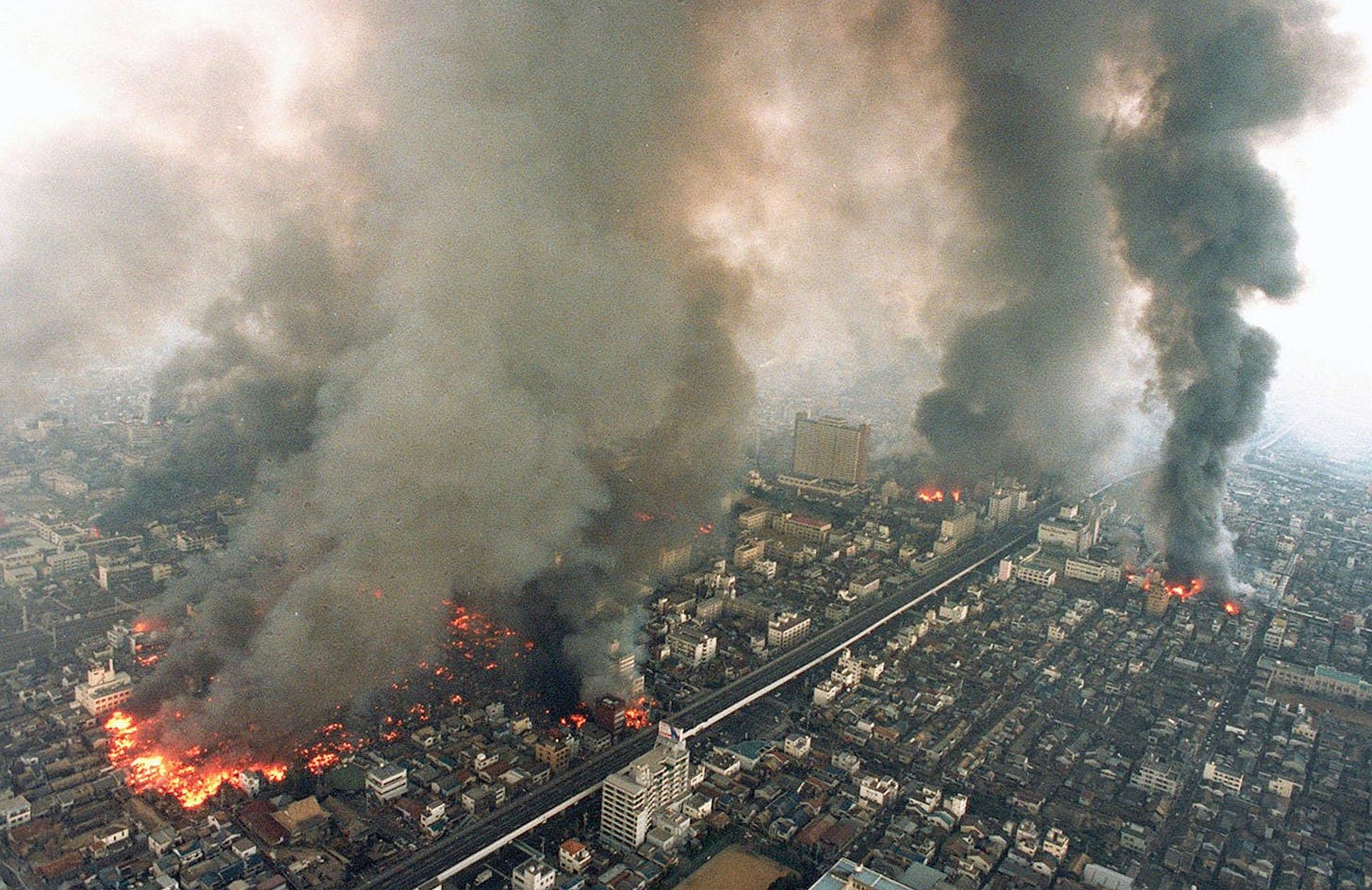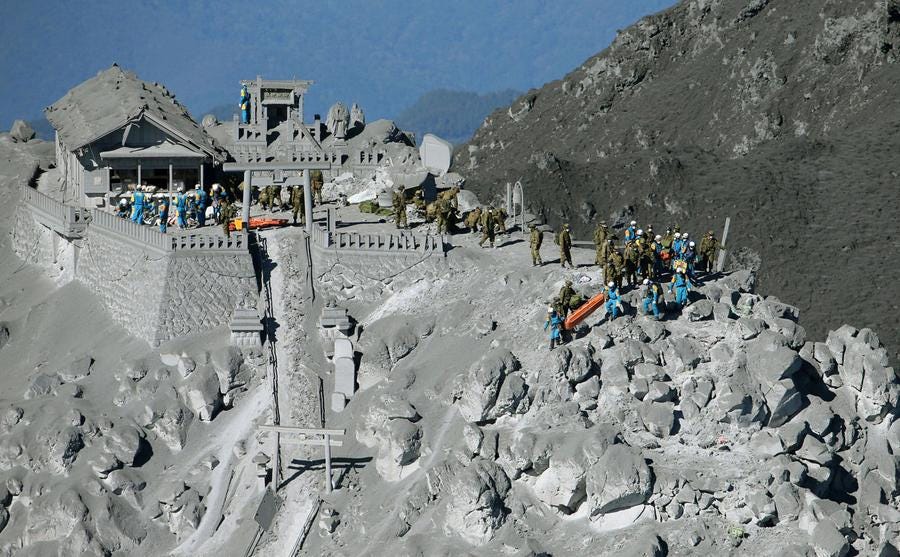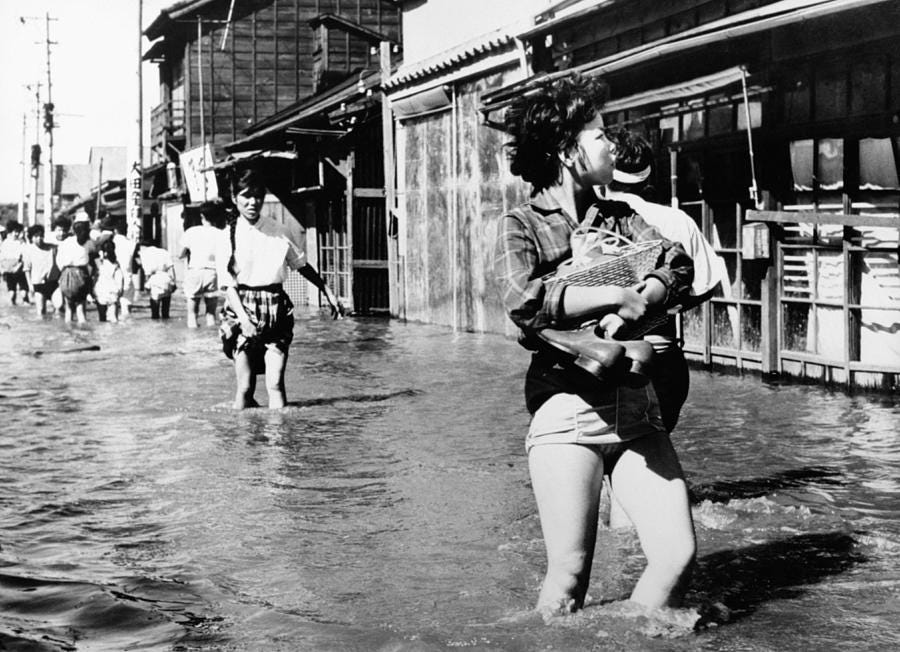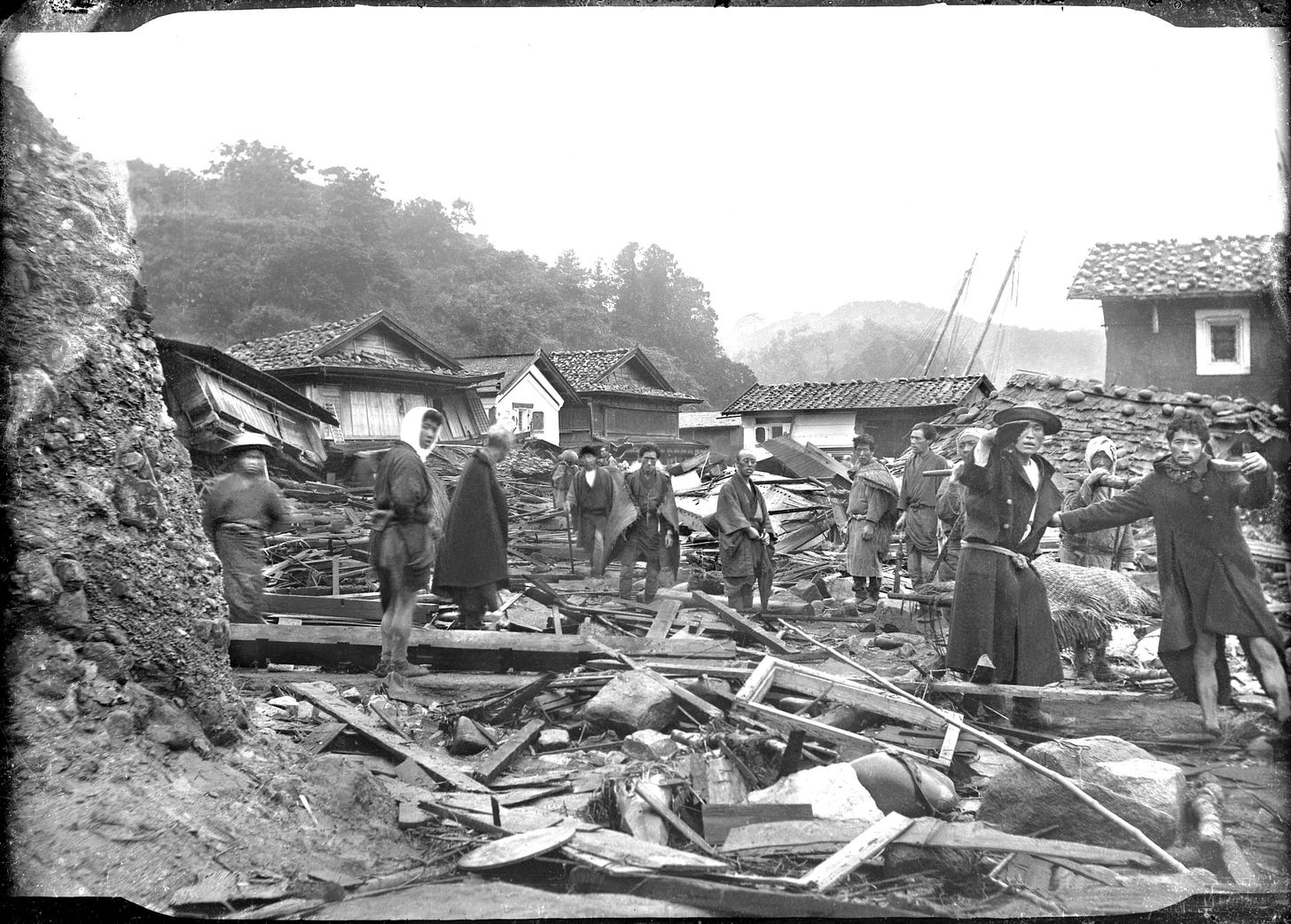Japan - A Natural Disaster Kingdom
I woke up to the news this morning that Sakurajima volcano in Kagoshima Prefecture, southwestern Japan, had erupted.
On my wrestling trips to the south west tip of Japan, I have seen this volcano many times before. The eruption alert was raised to its highest level of 5 on its 5-point scale, by the Japan Meteorological Agency, who warned the public to evacuate. It had previously been on 3.
Japan is frequently hit by natural catastrophes, largely as a result of its location inside the “Ring of Fire”. Now that I write this, I have Johnny Cash’s song in my head!
Japan is vulnerable to almost all natural disasters. The major ones include earthquakes, tsunamis, heatwaves, and typhoons, but flooding and landslides also occur often. Two of the five most expensive natural disasters in recent memory happened here, and some of the ten deadliest natural catastrophes of the 21st century have also occurred here.
These natural disasters have plagued Japan for thousands of years and it’s very safe to say that Japan’s economy, development, and social life have all been influenced by these natural disasters as well as the threat of future ones. Here are some of the ones that have happened:
The Great East Japan Earthquake
The public evacuation warning of Sakurajima brought back memories of the big one for me, the Great East Japan Earthquake of 2011. It was so powerful that it created low-frequency sound that could be heard even in space.
In the early afternoon of the 11 March 2011, I was sitting at my desk of Bank of America Merrill Lynch when the nation was rocked by a 9.0-magnitude earthquake that caused widespread damage to the country’s eastern coastal region. The earthquake was so powerful it moved Honshu, Japan’s largest island, 2.4 metres east and shifted the Earth on its axis by an estimated 10 to 25 centimetres.
Two days earlier on March 9th, we had felt a very powerful earthquake around the same time of day. It stopped, we all breathed a sigh of relief and got back to our jobs. The real one the next step.
The Great East Japan Earthquake triggered a tsunami that devastated the coastal areas of Tohoku and southern Hokkaido killing more than 18,000 people and wiping entire towns off the map.
At the Fukushima nuclear power plant, the gigantic wave surged over defences and flooded the reactors, sparking a major disaster. Authorities set up an exclusion zone which grew larger and larger as radiation leaked from the plant, forcing more than 150,000 people to evacuate from the area.
A decade later, that zone remains in place and many residents have not returned. Authorities believe it will take up to 40 years to finish the work, which has already cost Japan trillions of yen.
I was hired by the Fukushima government in 2021 to direct and edit a 15 minute info-documentary which is a film made to look somewhat like a documentary but really just a video the government want to put out. The goal was to get countries around the world to lift their ban on Fukushima food imports to their countries. It was a massive success as several countries did lift their bans.
Here is the link to the Guardian article covering the import restrictions ban being lifted in the UK recently: https://www.theguardian.com/environment/2022/jun/29/uk-to-lift-import-restrictions-on-food-from-fukushima?amp;amp;amp
I wrote the script for it, and even had to “act” in it. The shots I didn’t appear in, I either shot myself or received footage from a Fukushima TV station. The food was delicious too! Here is a short 7 minute version of the original 15 minute version.
Atami mudslide of 2021
Although the casualty list is small compared to other disasters, I was nearby the area at this time so this one also hits home. The giant mudslide in Atami, Shizuoka prefecture, which occurred around 10:30 a.m. July 3rd, one day after my 40th birthday.
1995 Great Hanshin/Kobe Earthquake
On the morning of January 17, 1995, at 5:45am, an earthquake shook the city of Kobe. The actual epicenter of the quake was the northern tip of Awaji islands, which was about 15 miles from the city. The high population and close proximity of Kobe to the epicenter cost 6,434 lives, besides large-scale destruction of highways and gas and electric connections of homes. Moreover, 300,000 people were left homeless.
One of the reasons that contributed to the deadliness of the quake was its unexpectedness. The area had seen several low-intensity earthquakes, and no one thought a quake of such a high magnitude could occur.
1923 Great Kanto Earthquake
Around noon on September 1st, 1923, an enormously powerful earthquake hit the Tokyo-Yokohama metropolitan area.
The tremors led to overturning of cooking stoves in houses, causing catastrophic fires, which actually claimed more lives than the falling houses themselves.
Thousands of people were incinerated at once when fires spread through Tokyo, reducing almost the entire city to a heap of rubble and ash. The temperatures were so scorchingly high, that they even caused the tarmac on the roads to melt, trapping and killing many.
The earthquake was one of the strongest ever to hit Japan and just like the 2011 earthquake, a tsunami was unleashed that killed thousands of people.
1855 Edo Earthquake
At about 10 am on November 11th, 1855, a tremor measuring 6.9 to 7.1 in magnitude struck the town of Edo, which is now called Tokyo. The tremor was followed by a series of quakes and a tsunami, which seems to be a key reoccurrence.
The destruction caused was enormous and around 14,000 houses are believed to have been destroyed. The casualties of the disaster totaled around 7,000 to 10,000. Around 1.5 to 2 square miles of the city was completely leveled. The shaking caused a large number of fires to break out and the locals blamed the God Ebisu, one of the “Seven Gods of Luck” and the patron of fishermen and tradesmen, for allowing his giant catfish Namazu to go free, which caused the earthquake by shaking vigorously.
The eruption of Mount Ontake
On Saturday the 27th September 2014, there was the sudden volcanic eruption of Mt Ontake, a volcano located around 200km west of Tokyo. The volcano erupted on a clear autumn day, at a time when many people were taking advantage of the beautiful hiking conditions.
The 3,067m high peak is a popular hiking route, dotted with lodges, cabins and well marked trails. The majority being hikers were near the top of the volcano when it erupted and 250 people were trapped on its slopes. 60 people died in the disaster.
The volcano’s sudden eruption forced many of the people on the mountain to make emergency descents through clouds of volcanic ash and falling rocks.
1959 Typhoon Vera
In September of 1959, Typhoon Vera hit Japan with full force. It is the most powerful and deadliest typhoon to ever hit Japan and was designated as a super-typhoon, first formed near Guam before heading northwards to Shionomisaki in the Honshu region.
It retreated briefly before returning again with decimating force. The storm caused torrential rains, massive flooding, and landfall. Maximum damage was caused in the city of Nagoya in Ise Bay, where harbors were completely destroyed, and even ships anchored there sunk.
3 – 5 inches of rain was received in a short span of time, destroying around 150,000 homes, and leaving about 1.5 million people homeless. The flooded areas were hit by an outbreak of diseases like gangrene and dysentery. More than 5,000 people were rumored to have been killed.
1896 Sanriku Earthquake
On the evening of June 15th, 1896, at about 7:30pm, villagers on the Sanriku coastline were caught off guard by a low intensity quake while they were celebrating the return of their soldiers from war. Enormous tsunamis followed, wiping out entire towns and villages. More than 22,000 people were killed. So devastating were the waves, that victims were found with their body parts broken off by the tremendous force of water.
In 2014, more than 10 glass-plate negatives of photos taken by an amateur photographer showing damage inflicted on a town in Iwate Prefecture were discovered. They were found at the Morioka Local Meteorological Observatory and were taken by a photographer the day after the earthquake.
1902 Hakkoda Mountains Incident
On the morning on January 23, 1902, a 210-man unit of the Japanese army’s Fifth Infantry set marching from Aomori. Their destination was the Tashiro Hot Spring. It was a training drill aimed at making the soldiers battle-ready in snowy conditions in case they had to fight with the Russians.
To get there, they had to make their way through the Hakkoda Mountains, which was supposed to be an easy trek. Instead, the men found themselves in the midst of an intense blizzard, that lasted for days, causing 199 men out of the 210 to freeze to death.
So intense was the storm that a search party found a surviving corporal frozen to ground in a standing position. This incident was the worst mountaineering disaster, not only in Japan but in the whole world.
As you can see, Japan loves itself some natural disasters. More include but are not limited to:
1293 Kamakura Earthquake (approximately 23,000 dead)
1498 Nankai Earthquake (approximately 31,000 dead)
1611 Sanriku Earthquake (approximately 5000 dead)
1703 Genroku Earthquake (approximately 100,000 dead)
1707 Hōei Earthquake (approximately 30,000 dead)
1771 Great Yaeyama Tsunami (approximately 13,000 dead)
1783 Tenmei Eruption (approximately 21,000 dead)
1792 Mount Unzen Earthquake and Tsunami (approximately 13,000 dead)
1854 Great Nankaido Earthquake (approximately 3000 dead)
1891 Mino-Owari Earthquake (approximately 7,200 dead)
2006 Typhoon Ewiniar (181 (official), approximately 10,000 (unofficial) dead)















